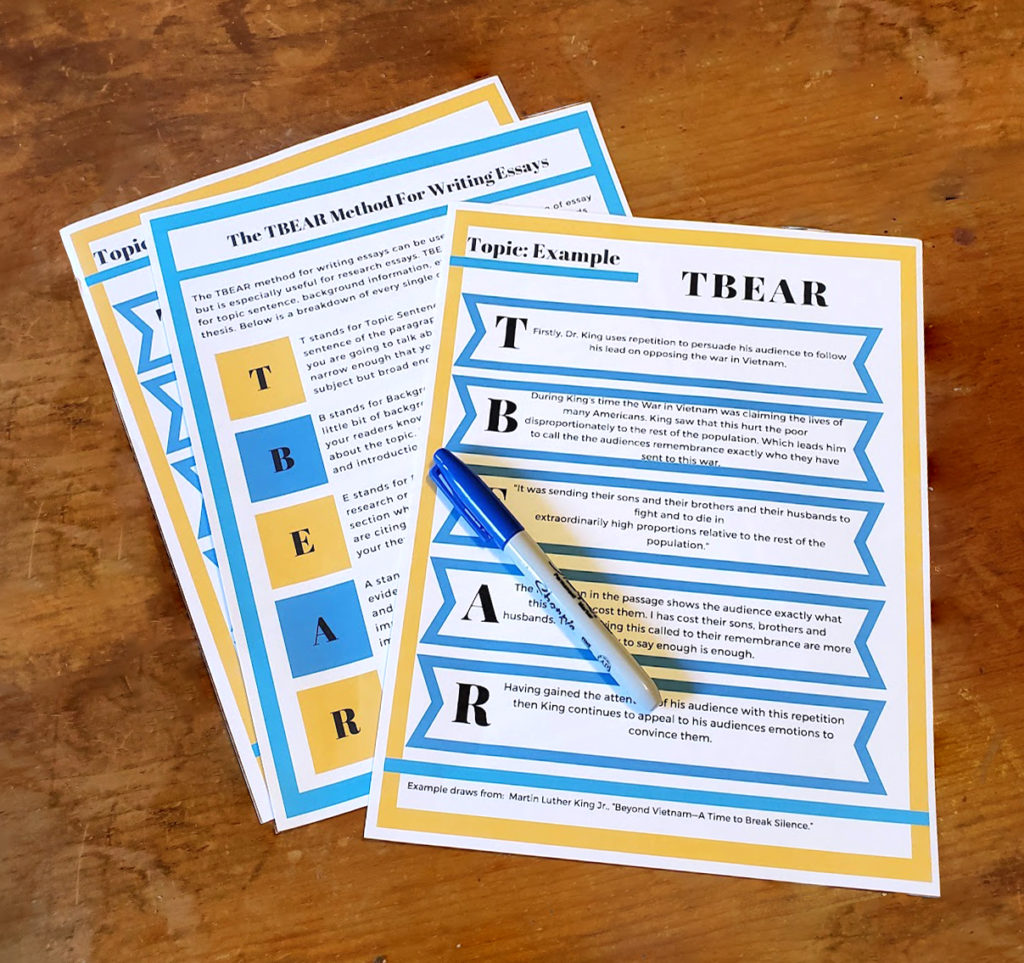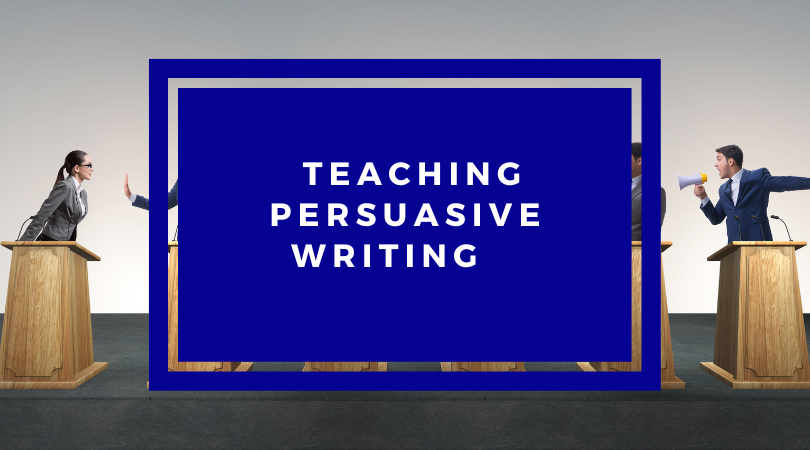Teaching Persuasive Writing

When teaching persuasive writing, it is important to start with the basics. In this blog post, we will discuss what a persuasive essay is and how to write one. We will also talk about different strategies for teaching persuasive writing, including using the TBEAR format for body paragraphs and teaching persuasive writing through debate. Finally, we will introduce my class which teaches all of this to middle school students. Parents can sign up for this class and help their children learn how to write persuasively!
This post may contain affiliate links for full disclosure click here
Teaching Persuasive Writing Structure
The first thing that needs to be taught to students for persuasive writing is the structure of persuasive essays. This includes the introduction, common ground paragraph, one side’s point of view, the other’s side’s point of view, then the rebuttal paragraph, and finally the conclusion. Teaching this structure will help students understand how to write a persuasive essay and what components are necessary.
Intro
The intro of a persuasive essay has two main parts a hook and a thesis statement. The hook or attention getter is going to introduce the topic and get readers interested in the essay. The thesis statement is going to state the main argument of the essay. For example, if the essay is about whether or not schools should start later in the morning, the thesis statement could be “Schools should start later in the morning because students would get more sleep and be less tired during the day.”
Common Ground Paragraph
The common ground paragraph is where your students will write a paragraph that shows what both sides of the argument can agree on. It is important to establish common ground in a persuasive essay to create a point of agreement. This will make readers that may not agree with you be more open to see your point of view.
One Side’s Point of View
In this section, students will write about one side of the argument. They should support their opinion with reasons and evidence. This first point of view is going to be the side that your students believe in. Therefore, this paragraph will be focused on their point of view. However, it is important that students research both sides of the argument so they can anticipate counterarguments and address them in the rebuttal paragraph of their papers.
The Other Side’s Point of View
In this section, students will lay out the opposite argument that they do not agree with. It is important to be respectful when writing about the other side’s point of view. This section should be focused on what the other side believes and not on why they are wrong. Students will address why this argument falls short in their rebuttal paragraph.
Rebuttal Paragraph
The rebuttal paragraph is where students will address counterarguments. They will write about why the points made by the other side are off base, fall short, or are just not as important in the larger scheme of things. This paragraph is going to be focused on why the student’s point of view is valid and should be believed.
Conclusion
The conclusion is the final paragraph of a persuasive essay. In this paragraph, students will summarize their main points and restate their thesis statement. They may also include a call to action or a call to agreement at the end of their essays. This is something that they want readers to do now that they have read their essays. They also could just call the readers to agree with their point of view because of the evidence that they laid out in the essay.
Want to read more?!?!
Strategies for Developing Writing Skills
How to Plan an Essay with Doodle Notes
How to write a good body paragraph using TBEAR
Teaching Persuasive Writing: The TBEAR Format
Once students understand the structure of the entire essay they need to understand the structure of individual body paragraphs. TBEAR is an acronym that reminds students of what they need in an essay. T stands for topic sentence, B stands for background information, E stands for evidence, A stands for analysis, and R stands for Return to Thesis.

Topic Sentence: The topic sentence announces the main point of the paragraph.
Background Information: This is where students will set up their evidence. They will provide context for the evidence so readers understand why it matters and how it supports the argument.
Evidence: In this section, students will include quotes, statistics, or other data.
Analysis: This is where students say why the evidence matters.
Return to Thesis: This is just a fancy way of saying transition into your next paragraph and the next idea that you are going to layout.
If you want to read a more detailed layout of TBEAR check out this blog post.
I also have a TBEAR graphic organizer available for free for my email subscribers. If you would like to receive this click the image below.
Teaching Persuasive Writing Debates
A great way to teach persuasive writing is to host debates in your class. This can be done with the whole class, in small groups, or even as a station activity.
When hosting a debate there are two different formats that you could use. The first is the traditional format where each side makes an opening statement followed by rebuttals and then a closing statement. The second option is to have a fishbowl debate. In this type of debate, there is a small group in the middle of the room debating and the rest of the class is observing. After a certain amount of time, students switch and the observers become debaters.
Teaching Persuasive Writing: Mastering Essay Writing Course
This is just a brief overview of teaching persuasive writing. If you are interested in learning more, I have created a course that has middle schoolers learning several different types of essays, and the entire second week is devoted to students learning how to write persuasive writing. They will go over the structures that I have listed above and will participate in debates and write an essay from beginning to end. They will also learn to write narrative and opinion essays.
To sign up for this course click here and choose which section works best for you.
I hope that this blog post has given you some ideas about how to teach persuasive writing. If you have any questions feel free to leave them in the comments.
If you enjoyed this post please consider sharing it.


